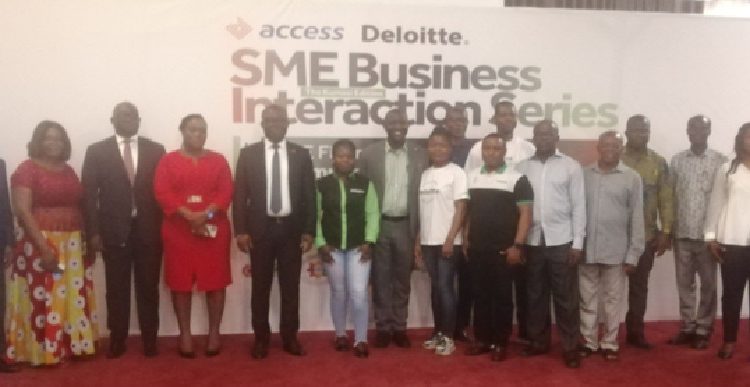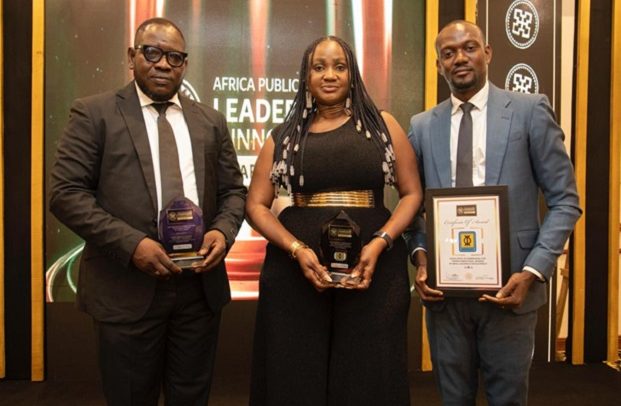
By Dickson ASSAN
Small and medium enterprises (SMEs) are the backbone of Ghana’s economy. They account for more than 90 percent of businesses, contribute close to 70 percent of GDP, and employ millions of Ghanaians across all sectors. From traders in local markets to innovative start-ups in Accra, SMEs drive growth, create jobs, and sustain communities.
Yet despite their importance, far too many SMEs struggle to survive. Studies show that more than half collapse within five years, and nearly six in ten fail within three. The problem is not ambition, Ghana is rich with entrepreneurial spirit, but a lack of structure.
Ambition may launch a business, but only structure can sustain it. In my work as a Chartered Accountant and SME Business Coach, I have found that sustainable enterprises are built on what I call the Five Pillars of SME Structure.
The Five Pillars of SME Structure
Financial Separation : A major weakness among SMEs is the failure to separate personal and business finances. When owners treat daily sales as personal income, they undermine accountability and blur the distinction between revenue, profit, and working capital.
Proper financial separation requires maintaining a dedicated business account, paying oneself a fixed salary, and treating retained earnings as funds for reinvestment. This practice ensures accurate profit measurement, strengthens internal controls, and builds credibility with banks, investors, and regulators.
Record-Keeping and Financial Discipline : Financial records are the dashboard of decision-making. Without them, SMEs operate blindly, unable to track cash flow, measure profitability, or plan for growth. Effective record-keeping must capture sales, expenses, assets, liabilities, and equity movements.
Businesses can begin with manual ledgers but should gradually adopt spreadsheets or accounting software such as QuickBooks, Tally, or Sage. Financial discipline also involves cash flow management, reconciliations, budgeting, and variance analysis. These practices provide clarity, improve transparency, and make SMEs more attractive to lenders, regulators, and potential partners.
Human Capital and Standard Operating Procedures (SOPs): People and processes are the backbone of continuity. SMEs that depend entirely on the founder remain fragile. Long-term sustainability requires deliberate investment in human capital development through staff training, knowledge transfer, and clearly defined roles. Recruitment should be based on merit and competence, not merely personal ties, and where possible, extended family members should not dominate the workforce, as this often creates conflict of interest and weakens accountability.
Formal job descriptions, structured performance evaluations, and incentive systems aligned with business objectives ensure that employees perform effectively and independently. Alongside building people, SMEs must build processes. Standard Operating Procedures (SOPs), written step-by-step instructions that guide routine tasks such as customer service, sales recording, inventory management, and procurement, are critical. SOPs reduce errors, enforce consistency, and preserve institutional memory, ensuring that the business continues to operate smoothly even in the absence of its founder.
Reinvestment for Growth : Profit is not just a measure of success; it is the engine of expansion. SMEs that consume all their profits for personal use often stagnate, while those that adopt a reinvestment culture steadily grow. Reinvestment can take the form of upgrading equipment, digitizing processes, funding marketing campaigns, or building staff capacity.
This practice aligns with the principle of retained earnings, where profits are ploughed back into the business to strengthen competitiveness, enhance productivity, and create resilience against shocks. Without consistent reinvestment, many businesses plateau and ultimately decline.
Compliance and Credibility : Compliance is frequently misunderstood as a bureaucratic burden, yet it is a cornerstone of credibility. Regulatory compliance includes tax filings, registration renewals, statutory employee contributions such as SSNIT, and sector-specific certifications.
Far from being an inconvenience, compliance demonstrates seriousness and corporate responsibility. In Ghana’s credit-constrained environment, compliance is often the determining factor for accessing loans, winning contracts, or attracting partnerships. Multinational firms, government agencies, and investors prefer working with compliant businesses because it reduces risk. SMEs that institutionalize compliance distinguish themselves as trustworthy and investment-ready.
Building for the Long Term
The five pillars cannot be built overnight. They require deliberate effort, consistent discipline, and in many cases professional guidance. Where resources allow, SME owners should engage accountants, auditors, HR consultants, or business coaches. Where resources are limited, they can rely on networks, mentors, and industry associations for knowledge-sharing and peer support.
Sustainability is built incrementally—through daily practices that reinforce structure. Over time, these pillars transform SMEs from fragile hustles into resilient institutions capable of creating jobs, attracting investment, and outliving their founders.
Conclusion
SMEs are the lifeblood of Ghana’s economy, but their survival depends on more than ambition. The difference between businesses that collapse within a few years and those that evolve into lasting institutions lies in structure. At the enterprise level, SMEs must embed the Five Pillars—financial separation, record-keeping, human capital development, reinvestment, and compliance.
Dickson is a Chartered Accountant and SME Business Coach. He is the Lead Consultant at CareerCompass Gh Limited, where he works with entrepreneurs and small business owners to strengthen governance, improve financial management, and build sustainable enterprises. Mobile: 233242771314/Email: dicksonassan@gmail.com
The post Structuring for success: Five pillars of sustainable SMEs appeared first on The Business & Financial Times.
Read Full Story















Facebook
Twitter
Pinterest
Instagram
Google+
YouTube
LinkedIn
RSS